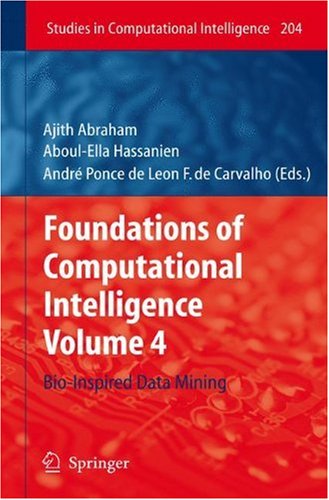

Most ebook files are in PDF format, so you can easily read them using various software such as Foxit Reader or directly on the Google Chrome browser.
Some ebook files are released by publishers in other formats such as .awz, .mobi, .epub, .fb2, etc. You may need to install specific software to read these formats on mobile/PC, such as Calibre.
Please read the tutorial at this link: https://ebookbell.com/faq
We offer FREE conversion to the popular formats you request; however, this may take some time. Therefore, right after payment, please email us, and we will try to provide the service as quickly as possible.
For some exceptional file formats or broken links (if any), please refrain from opening any disputes. Instead, email us first, and we will try to assist within a maximum of 6 hours.
EbookBell Team

4.1
20 reviewsRecent advances in the computing and electronics technology, particularly in sensor devices, databases and distributed systems, are leading to an exponential growth in the amount of data stored in databases. It has been estimated that this amount doubles every 20 years. For some applications, this increase is even steeper. Databases storing DNA sequence, for example, are doubling their size every 10 months. This growth is occurring in several applications areas besides bioinformatics, like financial transactions, government data, environmental monitoring, satellite and medical images, security data and web. As large organizations recognize the high value of data stored in their databases and the importance of their data collection to support decision-making, there is a clear demand for sophisticated Data Mining tools. Data mining tools play a key role in the extraction of useful knowledge from databases. They can be used either to confirm a particular hypothesis or to automatically find patterns. In the second case, which is related to this book, the goal may be either to describe the main patterns present in dataset, what is known as descriptive Data Mining or to find patterns able to predict behaviour of specific attributes or features, known as predictive Data Mining. While the first goal is associated with tasks like clustering, summarization and association, the second is found in classification and regression problems.
Computational tools or solutions based on intelligent systems are being used with great success in Data Mining applications. Nature has been very successful in providing clever and efficient solutions to different sorts of challenges and problems posed to organisms by ever-changing and unpredictable environments. It is easy to observe that strong scientific advances have been made when issues from different research areas are integrated. A particularly fertile integration combines biology and computing. Computational tools inspired on biological process can be found in a large number of applications. One of these applications is Data Mining, where computing techniques inspired on nervous systems; swarms, genetics, natural selection, immune systems and molecular biology have provided new efficient alternatives to obtain new, valid, meaningful and useful patterns in large datasets.
This Volume comprises of 16 chapters, including an overview chapter, providing an up-to-date and state-of-the research on the application of Bio-inspired techniques for Data Mining.